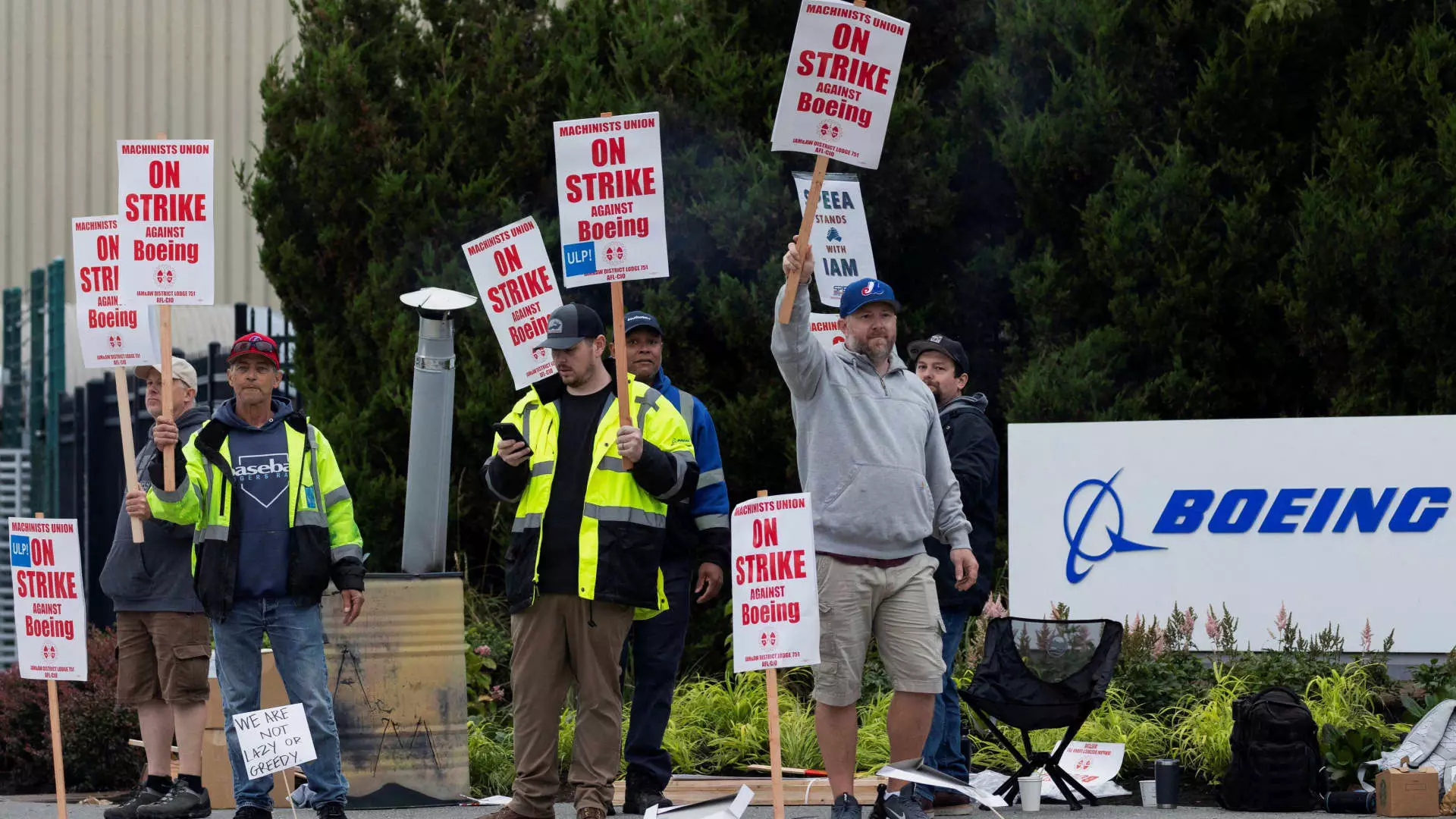In the midst of its financial turbulence, Boeing is grappling with a significant machinist strike that has entered its second week. The stakes are high as thousands of workers demand better wages while the aerospace giant struggles under the weight of nearly $60 billion in debt. The urgency of this situation paints a vivid picture of a company caught between its need for profitability and the practical needs of its employees.
Workers on the picket lines are not just voicing discontent; they are actively preparing for a potentially prolonged impasse, showcasing their resolve to seek better payment structures amidst rising costs of living in the Seattle area. With reports indicating that the median home price has skyrocketed from approximately $253,800 a decade ago to $613,000 in 2023, employees are left to contemplate increasingly severe financial realities. Many are considering secondary employment in sectors like landscaping, furniture moving, or warehouse work as they grapple with the cost of living that outpaces the national average significantly.
The financial implications of this strike extend far beyond the immediate costs. Analysts estimate that Boeing is losing around $50 million daily due to halted production. The reluctance to meet the union’s demands for a wage increase could compound these issues further. Complicating matters is Boeing’s precarious financial health, worsened by a series of production crises, including an incident with the 737 Max that has led to an $8 billion drain on the company’s financial resources this year alone.
Additionally, with the loss of health benefits looming on the horizon for striking workers—set to end on September 30—these financial pressures create an environment of urgency. The striking machinists received their last paychecks prior to the stoppage, which intensifies the stakes involved. Though a strike fund may offer $250 a week to participants, this is far from a sustainable solution arising from an extended work stoppage.
The gap between the expectations of the machinists and what Boeing is currently offering has left both sides frustrated. The company’s latest proposition—25% wage hikes over four years—has not satisfied workers, who have advocated for increases closer to 40%. This stalemate reveals not only a disagreement over financial compensation but also a broader discourse on labor rights and the sustainability of workers’ livelihoods.
Despite attempts to engage in negotiations, there have been reports of disappointment from both Boeing and union representatives about the lack of meaningful progress. Boeing’s new CEO, Kelly Ortberg, has been on the job for only six weeks but faces immense pressure to act decisively, indicating an urgent need for resolution. His announcement of temporary furloughs for thousands of company employees underscores a grim reality: the consequences of labor disputes often extend beyond the negotiators to impact the entire workforce.
This strike at Boeing is indicative of a larger trend in the labor market, witnessing various sectors experiencing similar tensions. Workers across industries, from actors to airline employees, have taken a stand for better wages and working conditions. The Biden administration has urged both parties to find a resolution that benefits not just the company but also the hardworking individuals who propel it forward.
The ongoing strike is a reminder of the delicate financial balance and the tight labor market that Boeing navigates. The lingering effects of the pandemic, which saw the company and its suppliers eliminate thousands of jobs, complicate the current situation. There exists a notable struggle to attract and retain skilled labor in an industry where proficiency in technical tasks is essential and difficult to come by.
As pressure mounts for resolution, it becomes increasingly clear that the dynamics at play are not merely confined to corporate negotiations; they reflect broader societal issues regarding wages, labor rights, and the resilience of the American worker amidst corporate restructuring.
The clashes at Boeing illuminate the complex intersection between labor demands and corporate survival strategies in a high-stakes environment. With the company bearing the brunt of financial strain and employees yearning for fair pay, the potential for a painful compromise looms as negotiations continue. Whether Boeing can emerge from this predicament with its workforce intact—and its reputation restored—remains to be seen, but the ongoing strike embodies a pivotal moment for both the company and its employees, showcasing the enduring spirit of American labor in the fight for dignity and fairness.


Leave a Reply